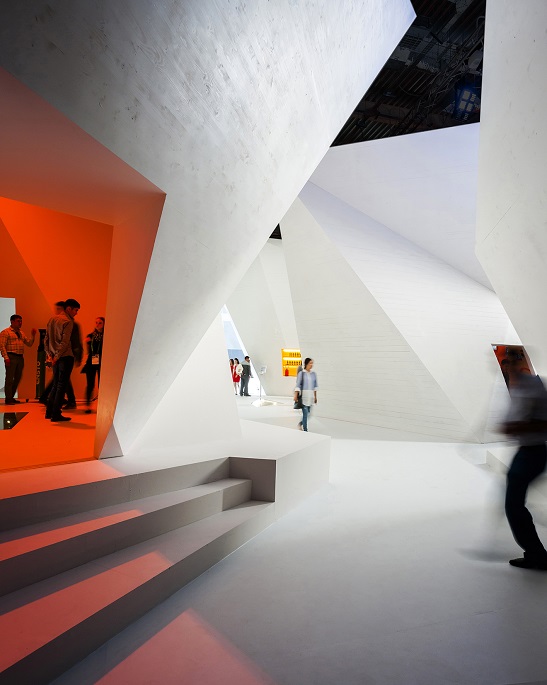Finnish pavilion in Astana Expo
Sotamaa siblings novel design won the gold
Published : 17 Sep 2017, 01:34
Updated : 18 Sep 2017, 19:22
It was thanks to the innovative design by the Sotamaa siblings that the Finnish pavilion at the Expo 2017 in Astana, Kazakhstan won the gold medal in its category (under 400m2) on September 10.
According to Ateljé Sotamaa, its inspiration for the stark, angular pavilion came from the powerful contrasts found in the Finnish “atmosphere, and the coexistence of technological and natural elements in the Finnish cultural identity.”
“There is a strong contrast between the white interstitial space and the warm interiors, which is supported by the careful use of sound and light. The design oscillates between the digital and the natural … The forms are, on the one hand, mathematical and digitally designed and, on the other hand, they seem natural, evoking associations to boulders, icebergs, and canyons. Overall, we wanted to tell a story about Finland... which is both technologically advanced and close to nature. It communicates a vision for the future where technology and nature are increasingly interdependent, and in harmony with one another,” said Kivi Sotamaa.
One of the challenges in designing the pavilion, according to him, was to simultaneously engage visitors and encourage exploration.
In his words, “We worked to make the pavilion a total work of art where architecture and exhibition content are intricately intertwined. The aim of the holistic design method was to create a powerful, emotional experience, which sparks people’s curiosity, and we were extremely happy to observe that people indeed became engaged and started to explore the exhibits. The effect was achieved by designing a pavilion which worked in layers. The first layer is atmosphere, which sets the mood in which the content is received. The second layer is artworks, which provoke and seduce the audience with the aim of triggering their intellect, and initiating spontaneous exploration. The third layer is exhibition objects, such as technological devices or models. The fourth layer is digital. It consists of touch screens with 360-degree images and embedded links deeper into the content related to specific topics. The layered orchestration is aimed at engaging the audience as active participants in the construction of the exhibition narratives, and offering possibilities of delving deeper and deeper into the subject matter of their individual interest.”
The theme of the expo was ‘Future Energy’. More than 120 countries set up pavilions or stalls in the expo. On the penultimate day of the expo, awards were given in various categories, and the Finnish pavilion achieved the top prize in its category.
For the Sotamaa siblings, winning the gold medal was not the work of just the designers; it was a team effort to integrate the theme of the pavilion and the overarching theme of the expo into the design itself.
“In our case there’s no separation between the design and the content. It’s all one thing: The pavilion architecture is not only an exhibit containing sustainable technologies but is built sustainably from wood using cutting edge design and manufacturing technologies. Ville MJ Hyvönen designed the pavilion soundscape as a digital soundsculpture based on the expo theme. We worked with Digital Sputnik to bring the sensation of Nordic light into the pavilion through the use of cutting edge film-set LED lighting. We worked with Tuomo Tammenpää and Daniel Blackburn to create an interactive phenomenon-based math game to demonstrate the contemporary Finnish pedagogy. We worked with Jaakko Tapaninen to create an installation of Finnish energy sector leaders discussing the future of energy. We worked with Reetta Räty to create an installation of young students talking about their dreams for the future. We worked with Pan Jiafeng in order to fill our education building with murals which communicate the key principles of the Finnish education system to a broad audience visually. We worked with Thinglink to create over 40 digital interfaces from which people can access deeper levels of information on the technologies and content on display. Finally, we filled the architecture with some of the most exciting examples of Finnish technologies. In other words, everything in the Finnish pavilion, starting with the architecture, was about the theme.”
Astana Expo 2017 that attracted nearly four million visitors ended on September 11.


